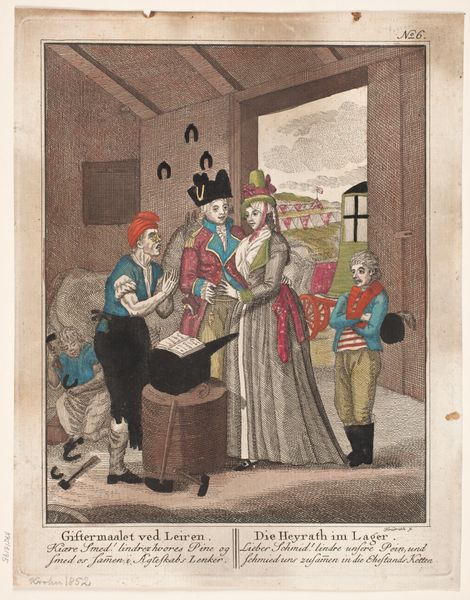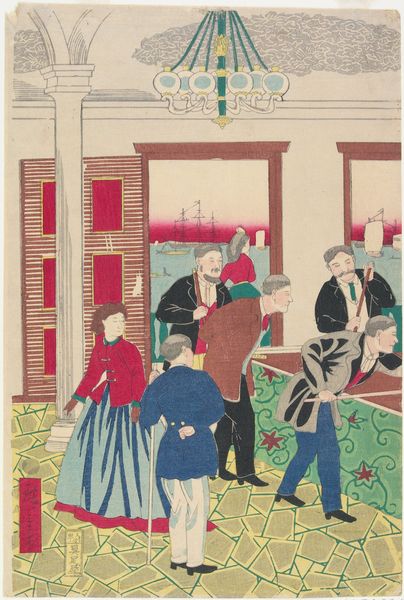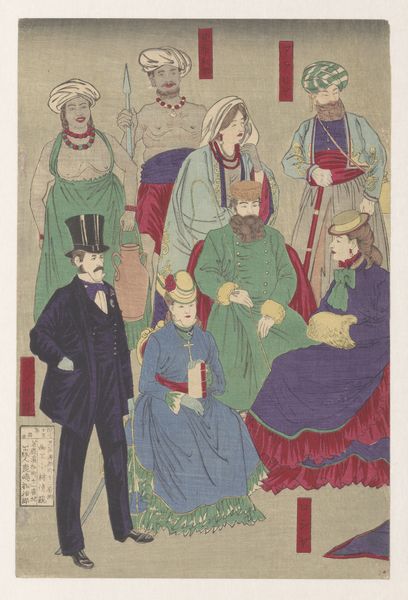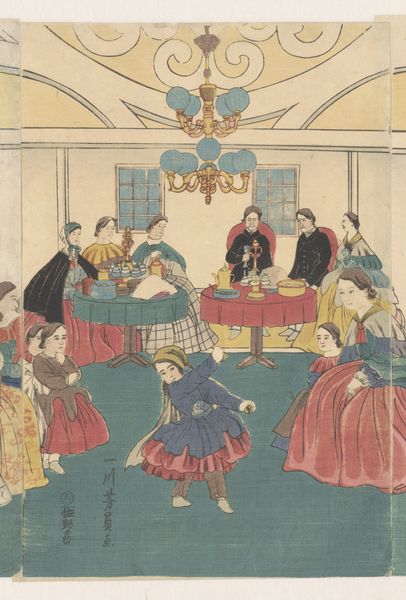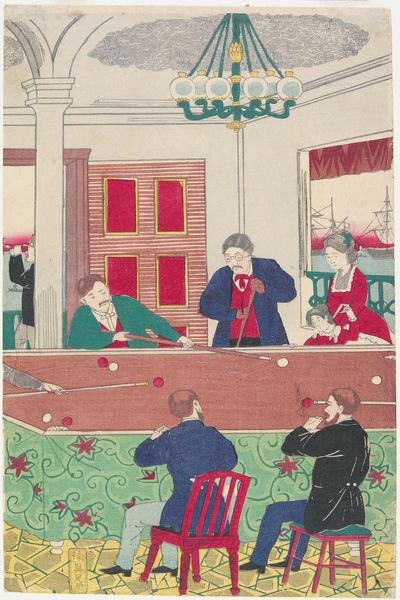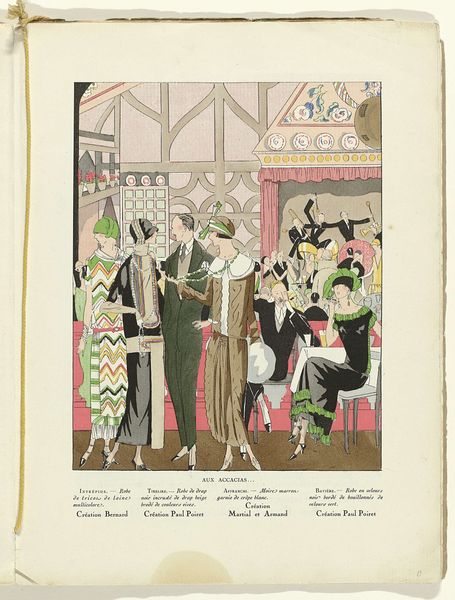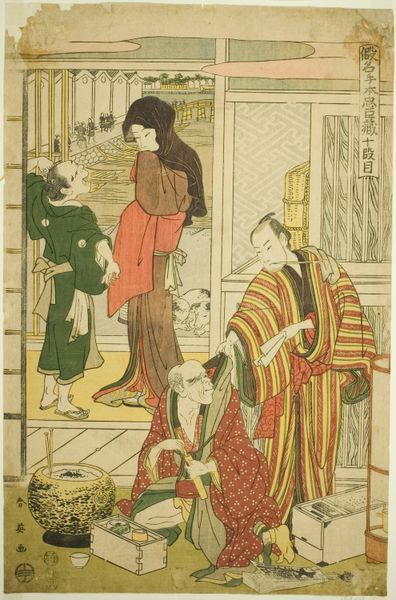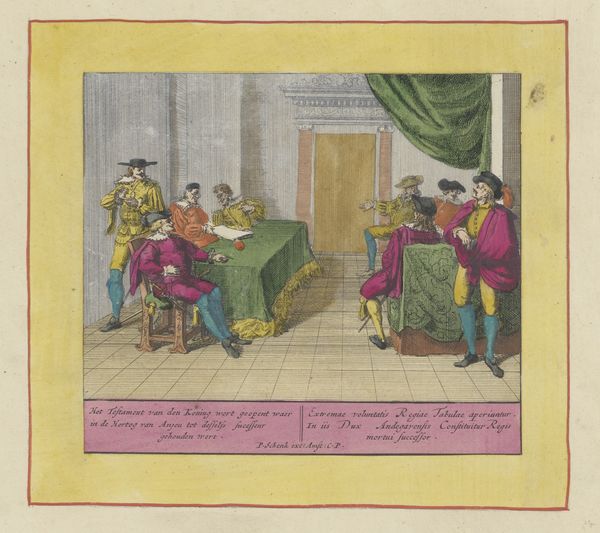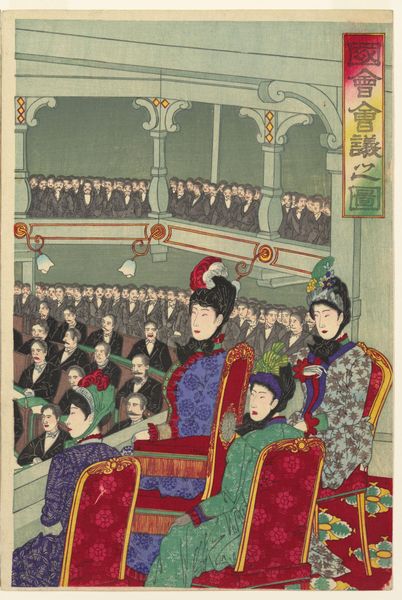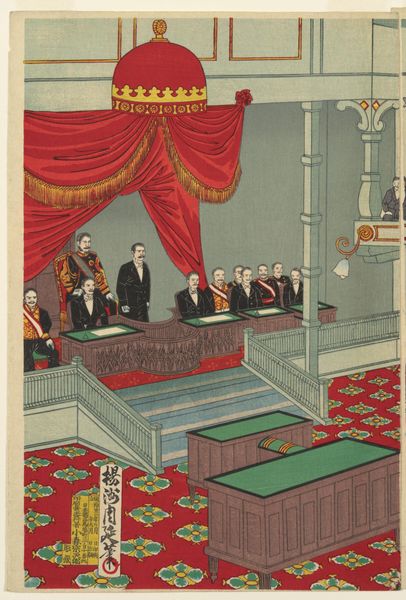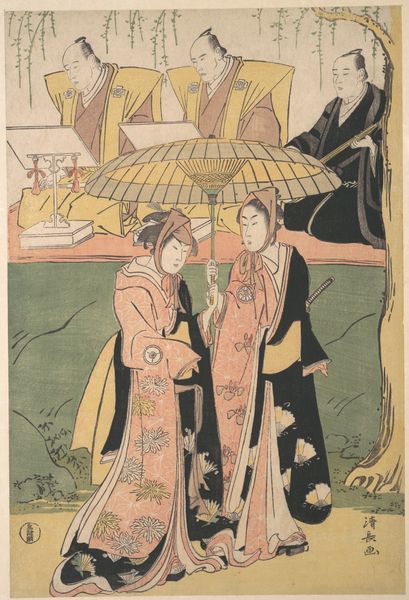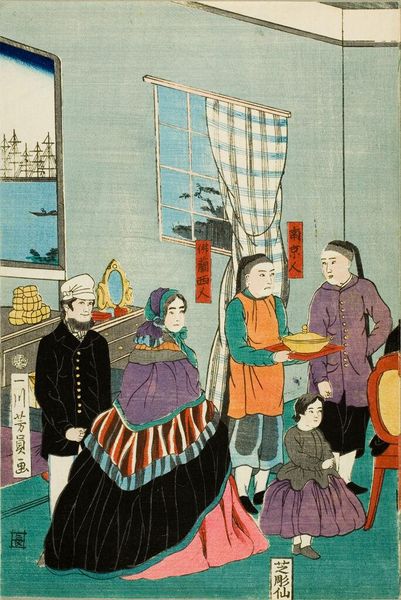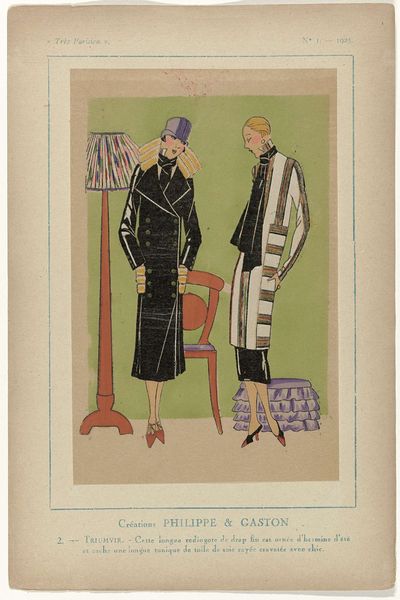
print, photography, woodblock-print
# print
#
caricature
#
asian-art
#
caricature
#
ukiyo-e
#
photography
#
woodblock-print
#
orientalism
Copyright: Public Domain
Curator: This whimsical woodblock print, dating back to 1860, is titled "A Foreign Camera," or "Gaikoku shashinkyo no zu," created by Utagawa Yoshikazu. It resides here at The Art Institute of Chicago. Editor: It's immediately striking – the almost comical rendering of these foreigners, set against that meticulously crafted interior. There's a naivete to it, but also a real sense of curiosity. Curator: Precisely. Consider the materials. The woodblock printing technique itself allows for mass production, but also demands incredible skill in carving the wood to achieve this level of detail and layering of color. It speaks to the increasing demand for images and representations of the outside world filtering into Japanese society at the time. Editor: I see those details as symbols loaded with meaning. Look at how the figures are positioned - those Westerners, caught mid-action. They seem awkward. Their clothing suggests status, wealth... the West itself embodying something new and perhaps unsettling for the viewer of this print. Curator: And note the labor involved; from the artist to the printers. These works became affordable images for the common person. They fueled curiosity about global trade, technologies and the world at large. The camera itself becomes a subject of fascination and even mockery, suggesting its complicated reception in Japan. Editor: The camera box becomes a stage! The interior scene beyond feels carefully constructed. Notice the repetition of shapes, almost like a theater backdrop, perhaps signifying artifice versus nature. The whole composition vibrates with visual tension. Curator: Right. By focusing on production, it reveals its broader function within Japanese visual culture. Editor: And by delving into that carefully curated visual space we unveil deeper meanings that capture cultural attitudes during that period of significant historical change. Curator: I find myself focusing on how the print reflects the tangible aspects of cross-cultural exchange. Editor: I see the fascinating web of encoded imagery speaking to cultural identity at a critical moment.
Comments
No comments
Be the first to comment and join the conversation on the ultimate creative platform.
